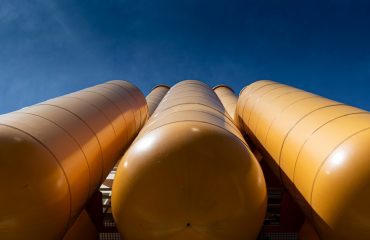body {
font-family: sans-serif;
line-height: 1.6;
}
h1, h2, h3 {
color: #333;
}
h1 {
font-size: 2.5em;
}
h2 {
font-size: 2em;
}
h3 {
font-size: 1.5em;
}
Annealed wire, a marvel of metallurgical engineering, plays a crucial role in countless applications across various industries. Its unique properties, achieved through a carefully controlled heating and cooling process, make it incredibly versatile and indispensable in modern manufacturing. This post delves into the fascinating world of annealed wire, exploring its key characteristics and showcasing its diverse applications.
Understanding the Properties of Annealed Wire
The annealing process significantly alters the microstructure of the wire, resulting in increased ductility and reduced hardness. This means annealed wire is highly pliable and easy to shape, bend, and form into complex configurations. This malleability is a key factor contributing to its widespread use. The specific properties of annealed wire vary depending on the base metal (copper, steel, aluminum, etc.) and the annealing parameters. For instance, annealed copper wire boasts excellent electrical conductivity, while annealed steel wire offers high tensile strength. Understanding these variations is crucial for selecting the right type of annealed wire for a specific application.
Annealed Wire in the Electronics Industry
The electronics industry heavily relies on annealed wire’s exceptional electrical conductivity and formability. It forms the backbone of countless electronic devices, from smartphones and computers to sophisticated medical equipment. Annealed copper wire, in particular, is preferred for its low resistance, allowing for efficient transmission of electrical signals. Its flexibility also allows for intricate wiring within compact devices, making it essential for miniaturization efforts. The precision required in electronics manufacturing necessitates a material that can be easily manipulated without compromising its performance, and annealed wire perfectly fulfills this requirement.
Annealed Wire in Automotive Applications
The automotive industry utilizes annealed wire extensively in various components. From wiring harnesses that connect the vehicle’s electrical systems to the intricate coils used in ignition systems, annealed wire’s durability and flexibility are critical. The ability to withstand vibrations and temperature fluctuations makes it ideal for the harsh conditions within a vehicle. Furthermore, the use of different alloys of annealed wire allows engineers to tailor the material’s properties to meet specific needs, such as corrosion resistance in exposed areas or enhanced strength in load-bearing applications.
Annealed Wire in Construction and Manufacturing
Beyond electronics and automotive applications, annealed wire finds its place in construction and general manufacturing. In construction, it’s frequently used in reinforcing concrete, providing structural integrity and preventing cracking. Its high tensile strength, combined with its ability to be easily shaped, makes it a cost-effective and efficient solution. In manufacturing, annealed wire is used in various processes, including welding, brazing, and the creation of springs, coils, and other components. The ease with which it can be formed into intricate shapes enables the creation of complex parts with high precision.
Emerging Applications of Annealed Wire: Beyond the Traditional
The versatility of annealed wire continues to drive innovation and expand its applications. Recent advancements have seen its use in emerging technologies, such as renewable energy systems. For instance, annealed copper wire is crucial in the manufacturing of solar panels and wind turbines, facilitating the efficient transmission of electricity generated from these sources. Furthermore, research is ongoing to explore the use of annealed wire in advanced materials, such as composites and nanomaterials, opening up new possibilities for its application in the future. The inherent properties of annealed wire, coupled with ongoing advancements in materials science, promise to further broaden its role in shaping technological progress.
In conclusion, annealed wire’s unique combination of strength, ductility, and conductivity makes it a vital material across a wide spectrum of industries. From the intricate workings of electronic devices to the robust structures of buildings, its presence is a testament to its enduring versatility and importance in modern manufacturing.
SEO-Friendly Tags:
- Annealed Wire
- Annealed Wire Applications
- Copper Annealed Wire
- Steel Annealed Wire
- Industrial Wire Applications




